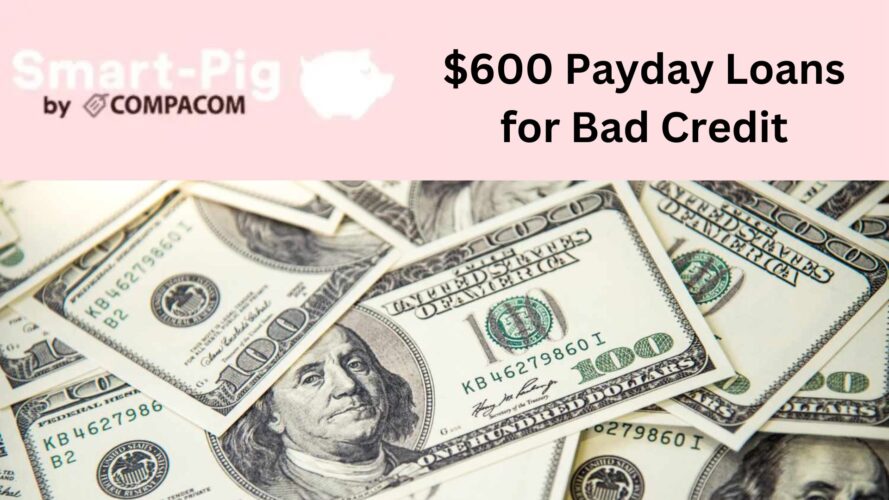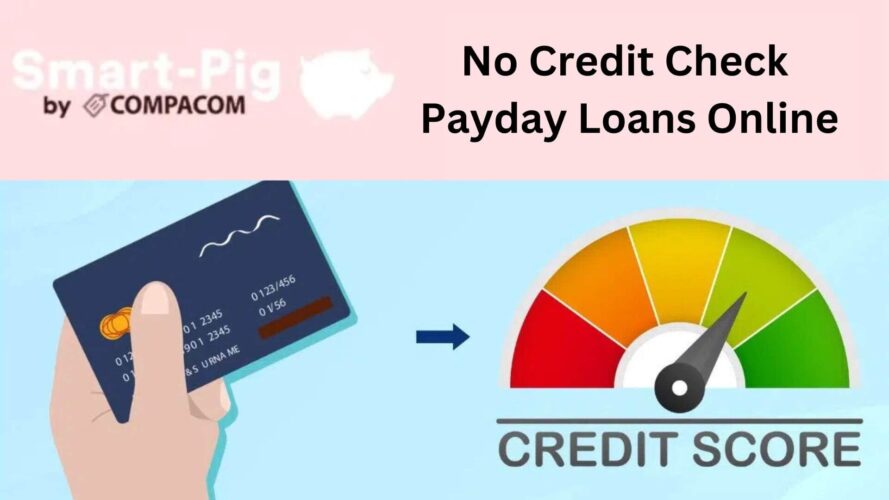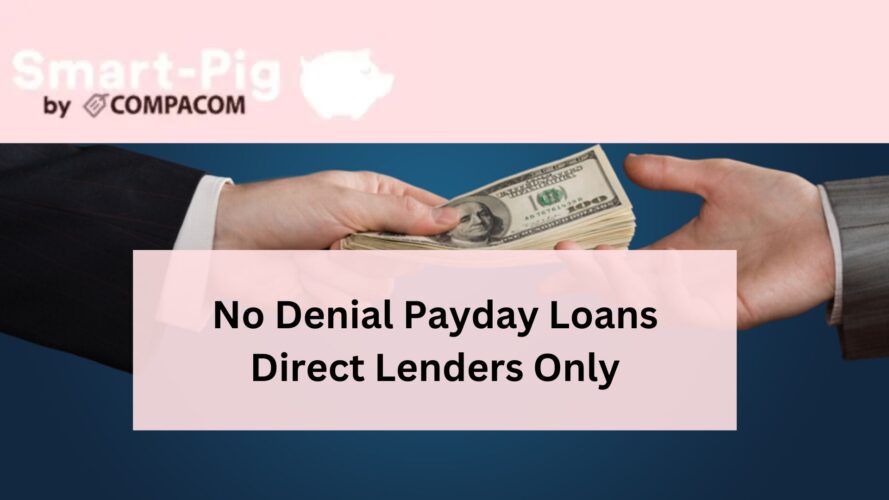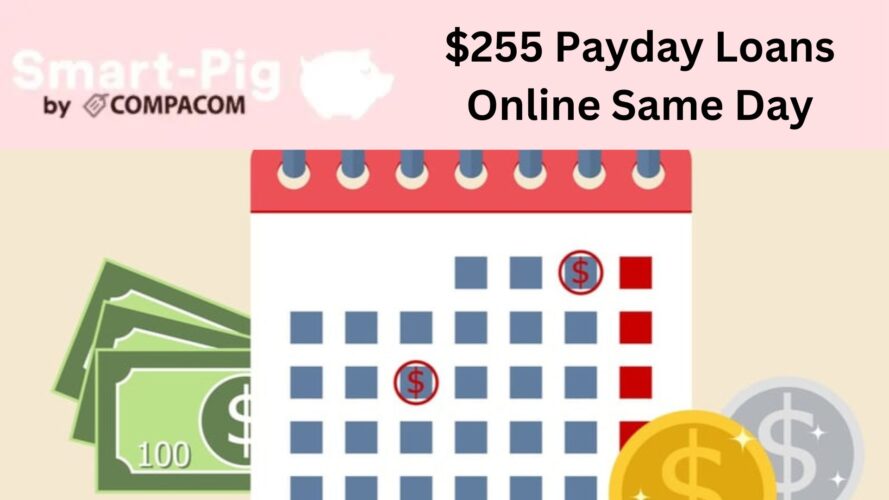
Unexpected expenses are a fact of life. When a $1,500 shortfall disrupts your financial equilibrium, don’t despair if traditional lenders slam the door on your credit score. Here’s a strategic roadmap to navigate alternative financing solutions and secure responsible funding:
- Credit Health Checkup: Request a free credit report to assess your creditworthiness. A score below 670 might limit your options, so consider improving it before applying.
- Explore Traditional Options First: Investigate personal loans from banks and credit unions. These can be a cost-effective solution, but qualifying with bad credit may be challenging.
- Alternative Lenders: A Lifeline for Subprime Borrowers: If traditional lenders are out of reach, explore online direct lenders specializing in subprime borrowers. They may offer loan products with approval regardless of credit score, often bypassing a hard credit check.
- Compare and Apply: Once you’ve identified potential lenders, meticulously compare interest rates, repayment terms, and any associated fees to secure the most favorable loan structure.
- Fast and Easy Funding: Many lenders offer online applications with streamlined processes. You could potentially receive the $1,500 deposit in your bank account on the same business day following approval.
Navigating Your $1,500 Loan Options: Solutions for Bad Credit
While a specific $1,500 loan designed for bad credit might be difficult to find, there are several financing solutions to consider:
- Traditional Personal Loans: These can be a good option, but qualifying with bad credit may be challenging. Consider building your credit score beforehand to unlock more favorable interest rates.
- Secured Loans: Collateralized Credit Access: If you own a vehicle with a clear title, you might qualify for a secured car title loan. This option leverages the car’s value as collateral, potentially securing a lower interest rate despite bad credit.
- Credit Builder Loans: Building a Solid Foundation: Designed specifically to establish or improve your credit history, credit builder loans provide you with a small sum (around $1,500) that you repay in on-time installments reported to credit bureaus, helping to build a positive credit profile.
- Small Dollar, High-Cost Loans: Proceed with Caution: Small payday loans offer quick cash but come with exorbitant interest rates and short repayment terms (typically two weeks). Due to the high costs associated with these loans, they should only be used as a last resort.
- Installment Loans: Spreading the Cost Over Time: These loans are repaid in fixed monthly installments over a predetermined term (often 12-24 months). Interest rates can be high for bad credit borrowers, so meticulous comparison shopping is crucial.
Understanding Small 1,500 Dollar Payday Loans
Ranging from $100 to $1,500, payday loans are designed for short-term relief until your next paycheck arrives. Unlike traditional lenders, payday lenders typically don’t conduct a hard credit check, making them easy to qualify for but potentially risky due to the following factors:
- Predatory Interest Rates: Payday loans can carry triple-digit Annual Percentage Rates (APRs), significantly inflating your repayment costs.
- Short Repayment Terms: The short repayment terms (typically two weeks) can create a cycle of debt, as borrowers struggle to repay the original loan amount plus exorbitant interest and fees, often leading them to take out another loan just to stay afloat.
Unsecured Personal Loans: Fast Funding, Flexible Repayment
Unsecured personal loans, unlike secured loans, do not require collateral. While they typically start at $5,000, many lenders offer smaller amounts online. Approval can often be obtained without a hard credit inquiry, and you can expect the funds deposited into your account within 1-2 business days. Repayment is straightforward, with fixed monthly installments offering predictable budgeting.
$1,500 Loan Cash App: Fast and Easy Access to Funds from Your Mobile
When you need a $1,500 loan, using a mobile loan app is a quick and straightforward way to get the funds you need. These apps allow you to apply directly from your smartphone, often without requiring a credit check, making them accessible to a wider range of borrowers. The application process is simple, and with just a few details, you can request your loan. Once approved, the funds are typically deposited into your account within one business day. Many mobile loan apps offer flexible repayment options, so you can choose terms that work for your budget. A $1,500 loan through a cash app is a convenient option for managing larger unexpected expenses or urgent financial needs.
Who Qualifies for a $1,500 Loan? Responsible Borrowing is Key
Uncle Sam wants to ensure responsible borrowing! Here’s a breakdown of the typical criteria lenders consider for a $1,500 loan:
- Credit Score: A good credit score (typically above 670) demonstrates your ability to manage debt responsibly. The higher your score, the more favorable your loan terms might be.
- Income Verification: Steady, verifiable income is essential. Lenders need to be confident you have sufficient income to comfortably repay the loan.
- Debt-to-Income Ratio (DTI): This ratio compares your monthly debt obligations to your gross income. A lower DTI (ideally below 36%) indicates you
- have more financial wiggle room to handle additional debt.
- Employment History: A stable job history reassures lenders you have a reliable income stream to service the loan repayment.
- Age and Residency: You must be of legal age to contract a loan (usually over 21) and a resident of the United States.
Unveiling the True Cost of Your Loan
Before diving into a $1,500 loan, understanding the total cost is crucial. Three key factors determine the overall cost:
- Principal Amount: The amount you borrow ($1,500 in this case).
- Interest Rate: The percentage you pay the lender for borrowing the money (expressed as Annual Percentage Rate or APR).
- Loan Term: The duration of the loan (usually months or years).
To calculate the price use the following formula:
Total Loan Cost = Principal + (Principal x Interest Rate x Loan Term)
Example:
Let’s say you borrow $1,500 with a 10% APR for a 1-year term (12 months). Here’s the calculation:
Total Loan Cost = $1,500 + ($1,500 x 0.10 x 1) = $1,500 + $150 = $1,650
Let’s compare the prices for various $1,500 loans:
| Loan Type | APR Range (%) | Estimated Fees | Repayment Term (Months) | Estimated Monthly Payment | Total Loan Cost (with 10% APR) |
| Payday Loan | 300% – 700% | $15-$75 origination fee | 2-4 weeks | $600-$800 | $2,100 |
| Installment Loan | 6% – 36% | $50-$100 origination fee | 12-60 months | $30-$150 | $1,650-$2,100 |
| Personal Loan | 6% – 36% | $0-$100 origination fee | 12-60 months | $30-$150 | $1,650-$2,100 |
| Title Loan | 100% – 300% | Vehicle title required | Varies (usually short-term) | Varies | $1,800-$2,250 |
Navigating the Loan Application Process
Ready to apply for your $1,500 loan? Here’s a step-by-step guide:
- Shop Around: Compare rates and terms from different lenders. Online lenders, banks, and credit unions all offer varying options.
- Check Your Credit Score: Knowing your credit score helps you understand the rates you might qualify for. You can usually get a free credit report once a year.
- Gather Documents: Most lenders require proof of income (paystubs), bank statements, and identification documents.
- Choose Your Loan Type: Consider factors like repayment term, interest rate, and fees when selecting your loan type (installment, personal, etc.).
- Submit Your Application: Fill out the online application form with accurate information. Be prepared to answer questions about your income, employment, and debt.
- Await Approval: Lenders will review your application and creditworthiness before making a decision. This might take a few days or a week.
- Review and Sign Loan Agreement: Carefully read the loan terms, interest rate, fees, and repayment schedule before signing the agreement.
- Receive Your Funds: Once approved, the loan amount will be deposited into your bank account electronically or mailed via check.
Essential Considerations Before You Borrow: Responsible Borrowing is Key!
A $1,500 loan can be a helpful tool, but avoid getting trapped in a cycle of debt! Here are some crucial questions to consider before committing:
- Necessity vs. Impulse: Is this loan truly essential, or can you cut back in other areas? A loan for a car repair is a different situation than a new gadget.
- Credit Check Considerations: Your credit score dictates your interest rate. A higher score unlocks better rates, saving you money in the long run. Check your credit report for errors beforehand.
- The APR Trap: Annual Percentage Rate (APR) considers both interest and fees. Don’t be fooled by a low headline rate – a high APR can significantly inflate your loan cost.
- Term Time – Finding the Balance: Shorter terms mean higher monthly payments, but you’ll pay less interest overall. Longer terms offer lower monthly payments but cost you more in interest. Choose wisely!
- Know All the Fees: Origination fees, application fees, and late payment penalties can add up. Factor these into your total loan cost comparison.
- Can You Afford It? Be Honest: It’s crucial to be realistic about your budget. Calculate your monthly payment and ensure it fits comfortably within your income. Don’t overextend yourself financially.
- Explore Alternatives: Exhaust All Options – consider dipping into savings, selling unused items, or negotiating payment plans before resorting to a loan.
- Government Assistance Programs: Depending on your situation, government assistance programs might be an option. Research eligibility requirements to see if you qualify.
- Beware of Predatory Payday Loan Sharks: These lenders often come with sky-high APRs and predatory terms. Explore other options before getting stuck in a payday loan cycle.
- Building a Strong Credit History: Timely loan repayments can improve your credit score, leading to better loan terms and lower interest rates in the future.
Remember: A loan is a financial tool, use it wisely! By following these smart tips, you can navigate the loan process confidently and avoid getting caught in a debt trap. Responsible borrowing is key to achieving financial stability and peace of mind.











